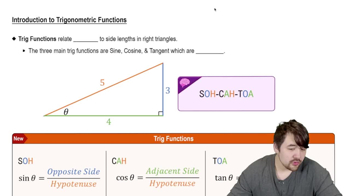Table of contents
- 0. Functions7h 52m
- Introduction to Functions16m
- Piecewise Functions10m
- Properties of Functions9m
- Common Functions1h 8m
- Transformations5m
- Combining Functions27m
- Exponent rules32m
- Exponential Functions28m
- Logarithmic Functions24m
- Properties of Logarithms34m
- Exponential & Logarithmic Equations35m
- Introduction to Trigonometric Functions38m
- Graphs of Trigonometric Functions44m
- Trigonometric Identities47m
- Inverse Trigonometric Functions48m
- 1. Limits and Continuity2h 2m
- 2. Intro to Derivatives1h 33m
- 3. Techniques of Differentiation3h 18m
- 4. Applications of Derivatives2h 38m
- 5. Graphical Applications of Derivatives6h 2m
- 6. Derivatives of Inverse, Exponential, & Logarithmic Functions2h 37m
- 7. Antiderivatives & Indefinite Integrals1h 26m
- 8. Definite Integrals4h 44m
- 9. Graphical Applications of Integrals2h 27m
- 10. Physics Applications of Integrals 2h 22m
3. Techniques of Differentiation
The Chain Rule
Problem 97b
Textbook Question
Composition containing sin x Suppose f is differentiable for all real numbers with f(0)=−3,f(1)=3,f′(0)=3, and f′(1)=5. Let g(x)=sin(πf(x)). Evaluate the following expressions.
b. g'(1)
 Verified step by step guidance
Verified step by step guidance1
Step 1: Understand the problem. We need to find the derivative of the function g(x) = \sin(\pi f(x)) at x = 1. This involves using the chain rule for differentiation.
Step 2: Apply the chain rule. The chain rule states that if you have a composition of functions, such as g(x) = \sin(u) where u = \pi f(x), then the derivative g'(x) is given by g'(x) = \cos(u) \cdot u'(x).
Step 3: Differentiate the inner function u(x) = \pi f(x). The derivative u'(x) is \pi f'(x) because the derivative of a constant times a function is the constant times the derivative of the function.
Step 4: Substitute u = \pi f(x) and u'(x) = \pi f'(x) into the chain rule expression. This gives g'(x) = \cos(\pi f(x)) \cdot \pi f'(x).
Step 5: Evaluate g'(1) by substituting x = 1 into the expression. Use the given values f(1) = 3 and f'(1) = 5 to find g'(1) = \cos(\pi \cdot 3) \cdot \pi \cdot 5.
 Verified video answer for a similar problem:
Verified video answer for a similar problem:This video solution was recommended by our tutors as helpful for the problem above
Video duration:
3mPlay a video:
Was this helpful?
Key Concepts
Here are the essential concepts you must grasp in order to answer the question correctly.
Chain Rule
The Chain Rule is a fundamental principle in calculus used to differentiate composite functions. It states that if you have a function g(x) that is composed of another function f(x), the derivative g'(x) can be found by multiplying the derivative of the outer function g with respect to f by the derivative of the inner function f with respect to x. This is essential for evaluating g'(1) in the given problem.
Recommended video:

Intro to the Chain Rule
Derivative of Trigonometric Functions
The derivative of trigonometric functions, such as sine, is crucial for solving problems involving these functions. Specifically, the derivative of sin(u) with respect to x is cos(u) multiplied by the derivative of u with respect to x. In this case, since g(x) involves sin(πf(x)), understanding how to differentiate sin with respect to its argument is necessary for finding g'(1).
Recommended video:

Introduction to Trigonometric Functions
Evaluating Derivatives at Specific Points
Evaluating derivatives at specific points involves substituting the given x-value into the derivative expression after it has been computed. In this problem, after applying the Chain Rule and finding g'(x), we will substitute x = 1 to find g'(1). This step is crucial for obtaining the final numerical result required by the question.
Recommended video:

Critical Points

 5:02m
5:02mWatch next
Master Intro to the Chain Rule with a bite sized video explanation from Callie
Start learningRelated Videos
Related Practice






